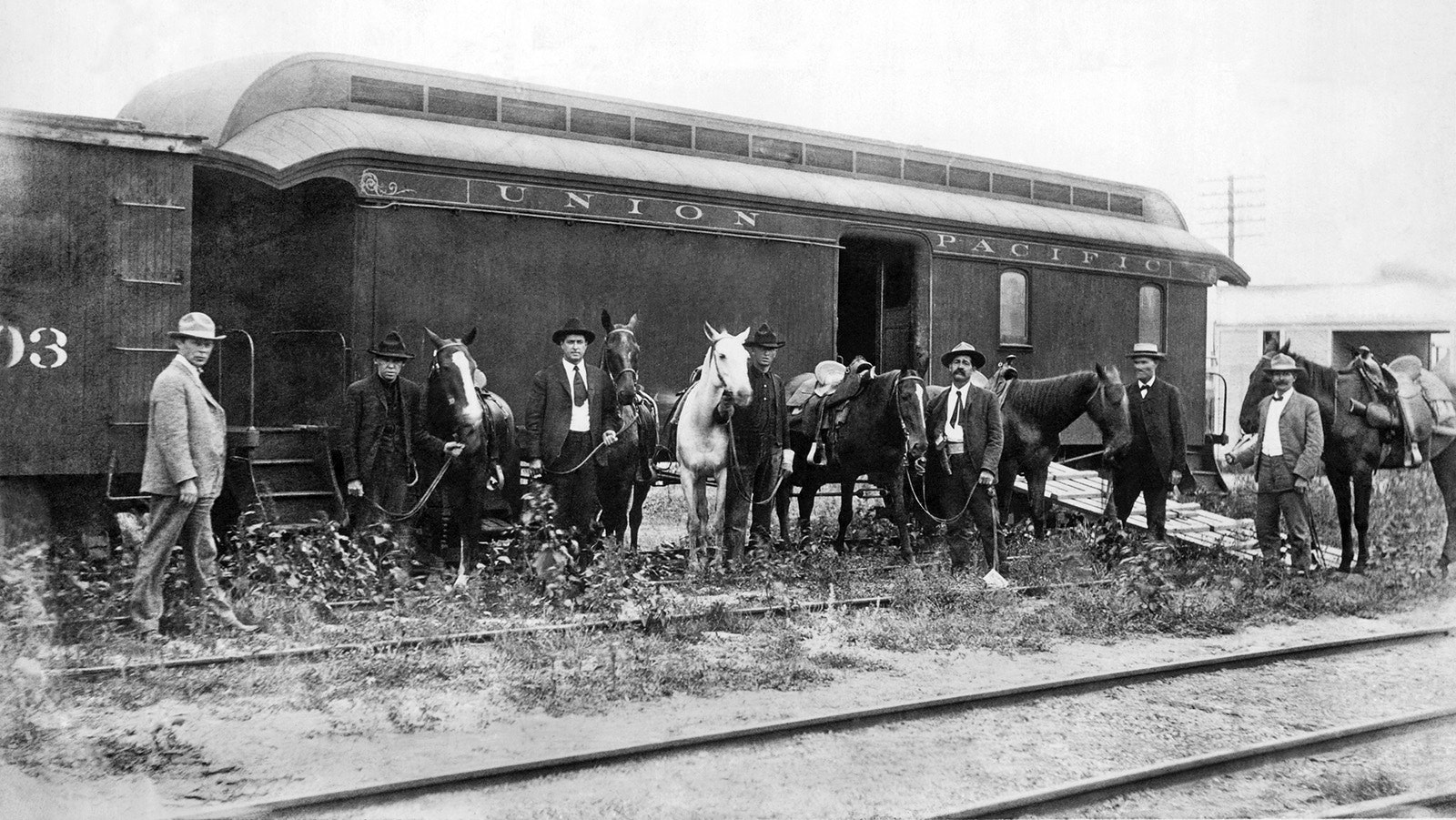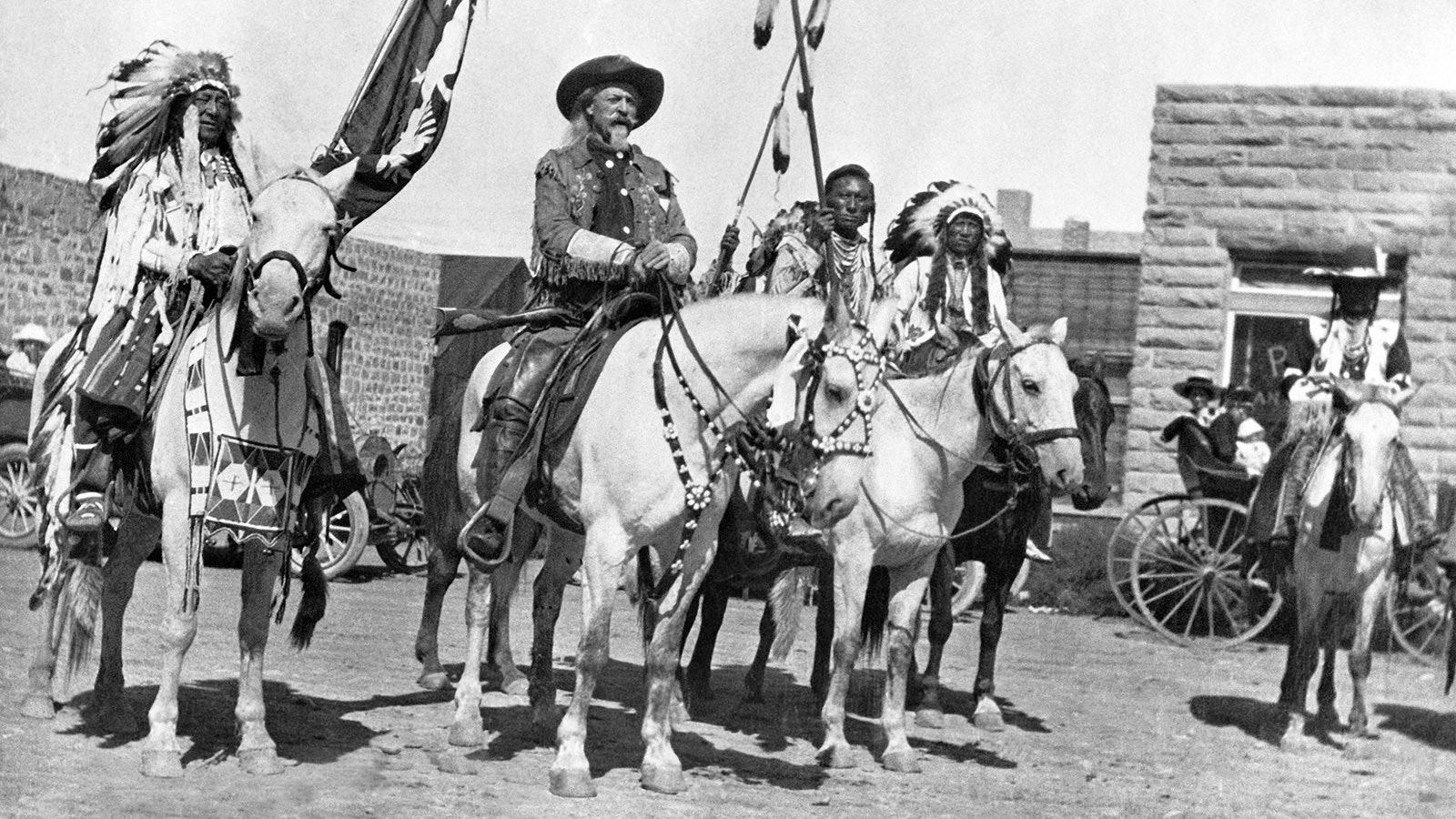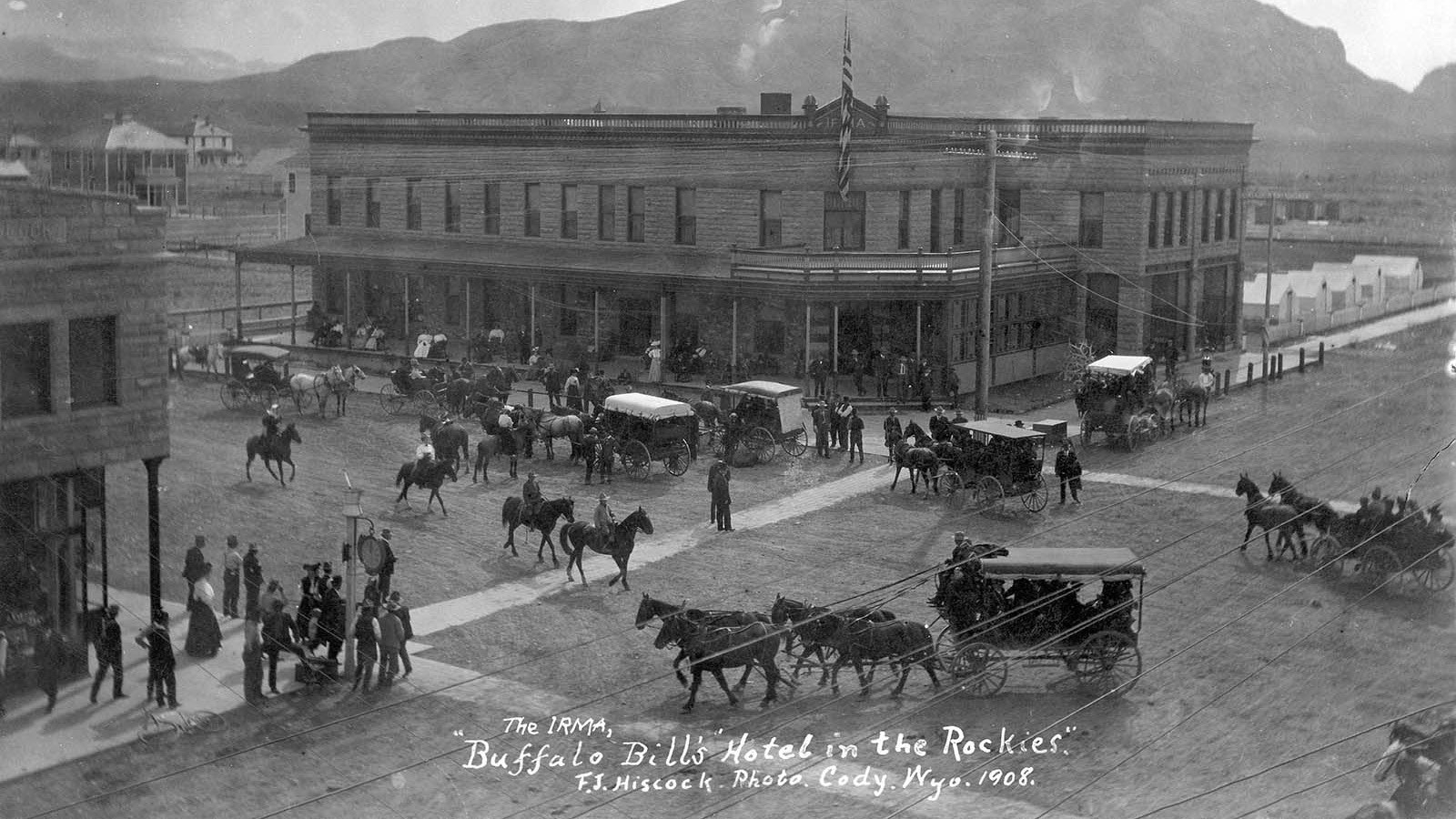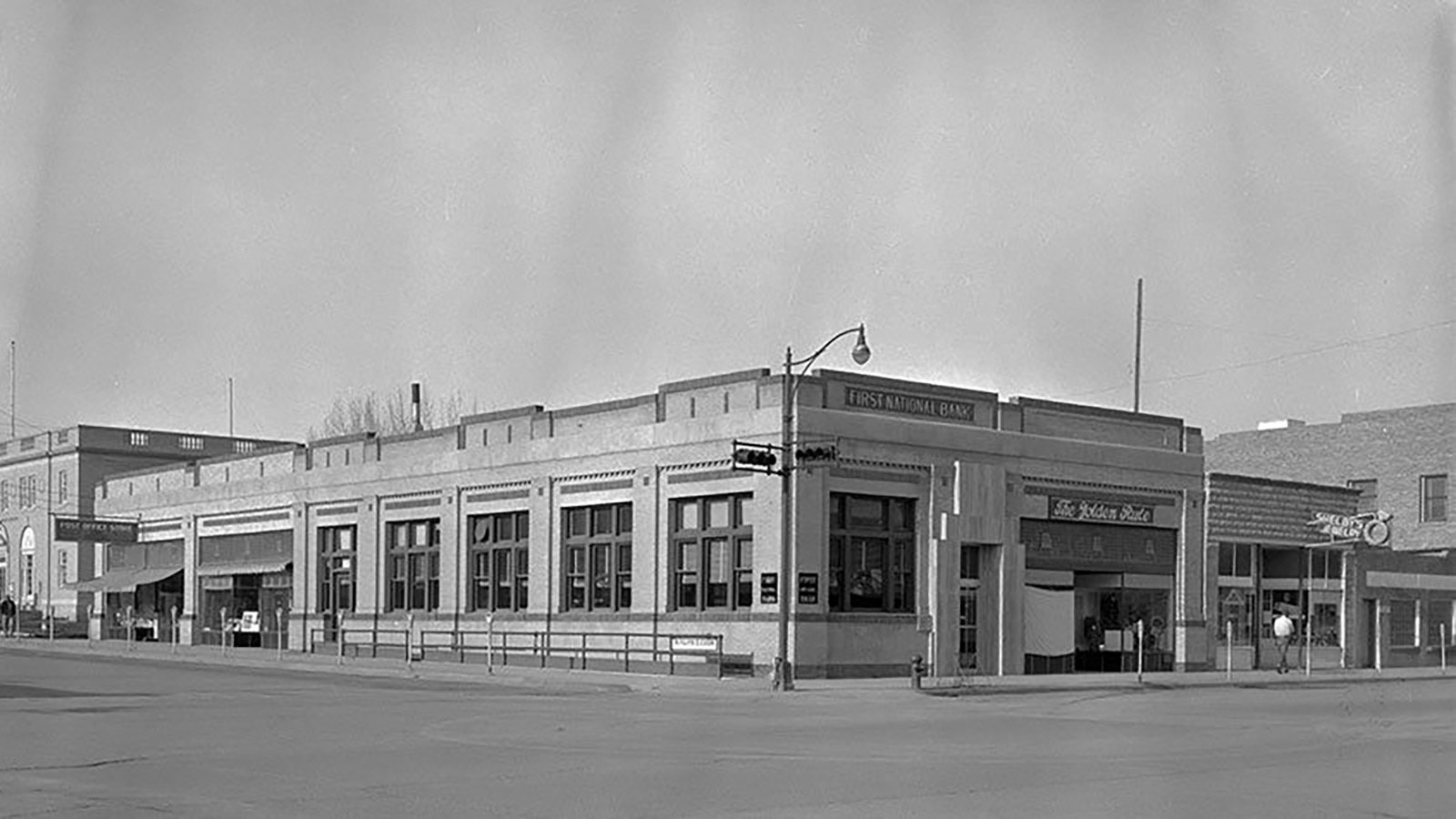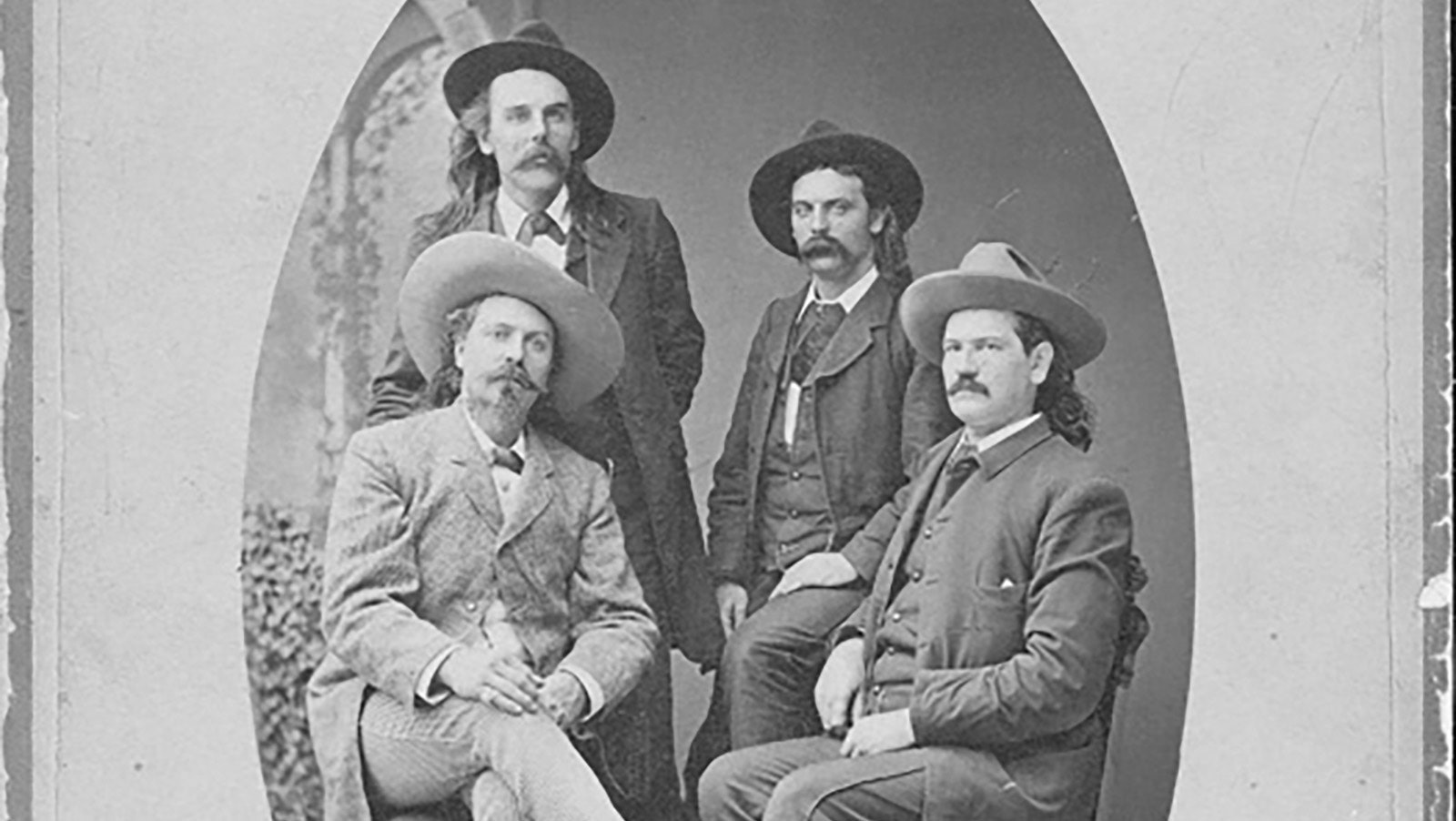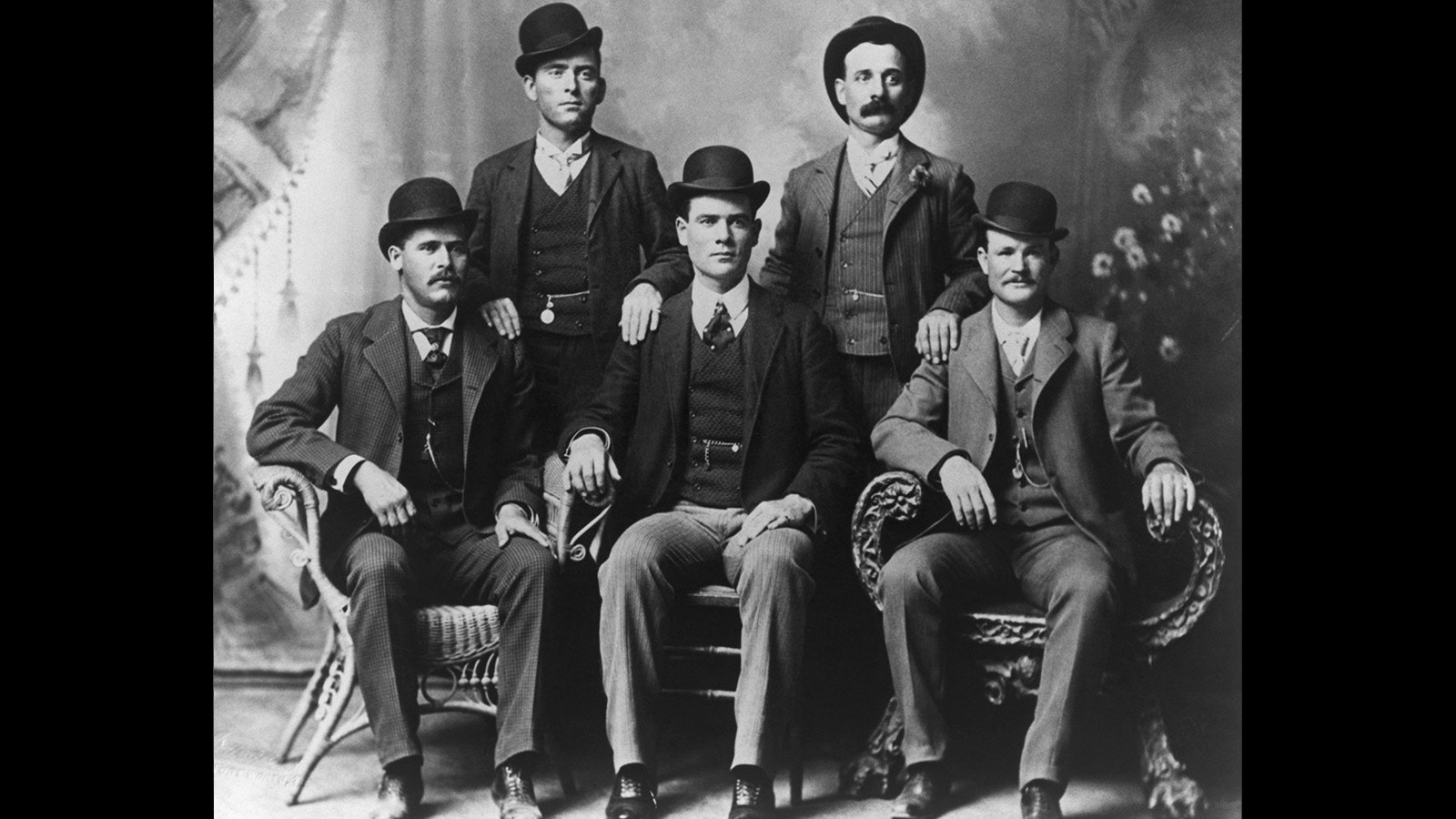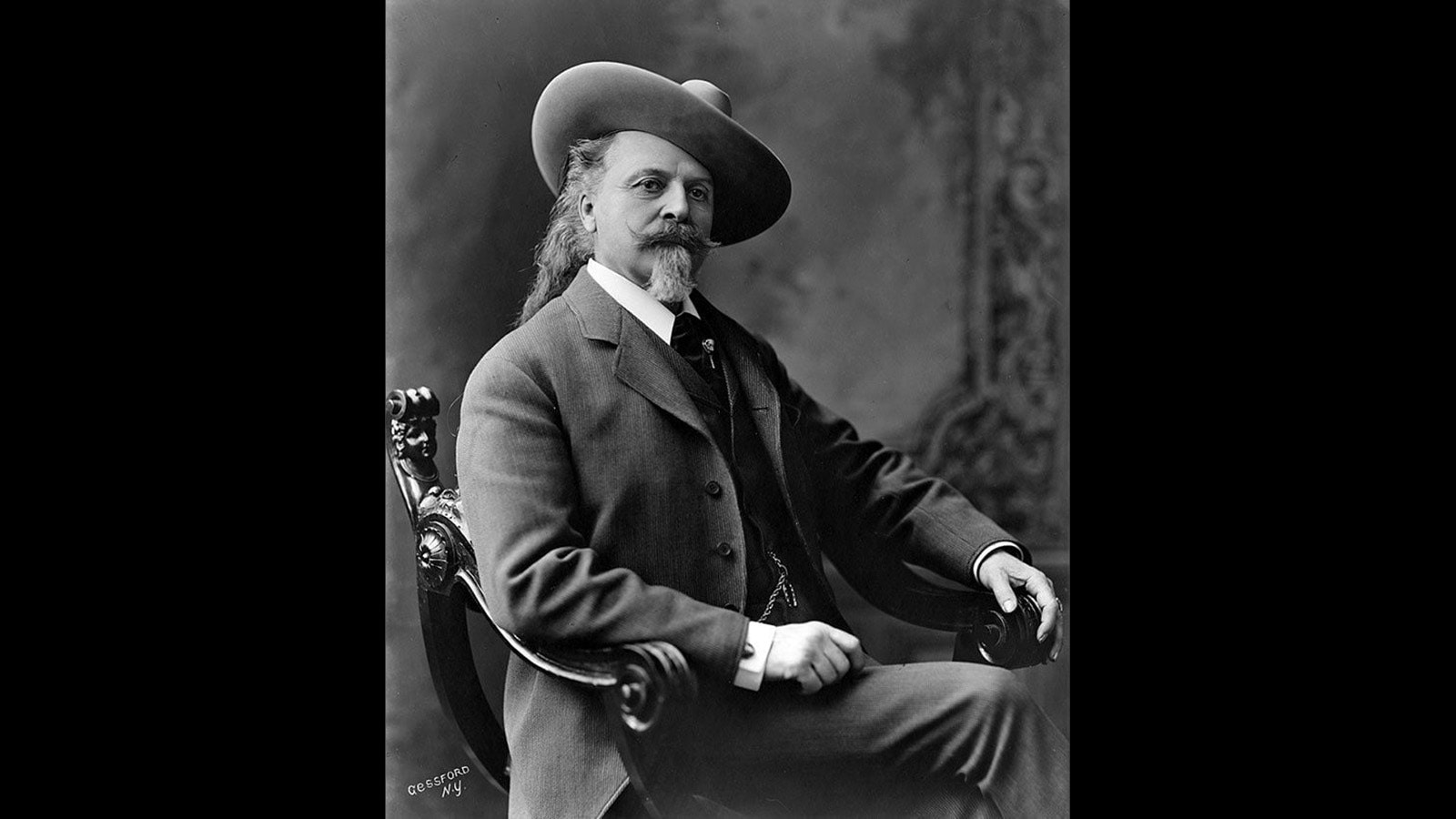Editor’s note: This is the second of two stories about the infamous 1904 robbery of the First National Bank in Cody, Wyoming. The first part explores how the Hole in the Wall Gang wasn’t responsible for the daring bank heist and shootout in broad daylight that left one man dead.
When two unknown men held up the First National Bank in Cody on Nov. 1, 1904, the residents of Cody, Wyoming, responded with an old Western shootout. More than 50 shots were fired and one person wound up dead in the street, but the robbers got away.
When Buffalo Bill Cody got word of the robbery in his namesake town, he vowed vengeance and set off for Cody to find and punish the perpetrators.
“We want them dead rather than alive,” he told the press following the event.
That much of Buffalo Bill’s version of the Cody bank robbery is true. But while thousands of people watched Buffalo Bill save the day in cities worldwide in his Wild West Show, nobody in Cody witnessed this act of actual Western heroism.
“This is a story where we know (Buffalo Bill) did try to take advantage of the past and use it to build his reputation,” Jeremy Johnston, curator of the Buffalo Bill Museum at the Buffalo Bill Center of the West, told Cowboy State Daily.
Back With a Vengeance
Thirty years earlier, it would’ve been easy for Buffalo Bill Cody to be inserted (by himself or others) into any notable — or notorious — event in Western history. The sight of Buffalo Bill brazenly firing at the fleeing bank robbers in Cody would be perfect for the press and Western genre writers of the time.
But Buffalo Bill Cody never fired at the robbers in Cody. He was still touring with his internationally renowned Wild West Show when he lent his name and influence to the founding of Cody in 1899.
Buffalo Bill was in Omaha, Nebraska, when he heard about the First National Bank robbery. By that point, even The New York Times was writing about the violent robbery and the $10,000 reward for the apprehension of the culprits, which may have included the notorious “Kid Curry” of the Wild Bunch and yearning for Buffalo Bill’s response.
“He was returning to Cody at the time he received word that the bank had been robbed,” Johnston said. “And he told all the newspaper writers he was actually guiding a group of British sports hunters to the area and his young nephew on his first hunting trip.”
Buffalo Bill was one of the most famous men in the world then, and the press was immediately enamored with the idea of the legendary Western hero returning to the town bearing his name to round up some violent outlaws.
"I have wired my manager at Cody, Col. Frank Powell, the old Indian fighter and scout, to offer a large reward for the capture alive of each robber,” Buffalo Bill told newspaper reporters in Omaha, “and I told him to double the reward if the outlaws were killed. We want them dead rather than alive."
Buffalo Bill indulged the press, showing off his traveling companion Chief Iron Tail, an Oglala Lakota chief who performed in the show and was “dead anxious to get into the scrimmage” with the outlaws. He vowed that “within 10 minutes after our train arrives (in Cody) we shall be in the saddle with our guns, and away we go.”
Iron Tail would become the model for the Buffalo Nickel, first issued by the U.S. Mint in 1913.
The press had a field day. Johnston cited one headline that proclaimed Buffalo Bill "Will Battle to the Death." It was only a matter of time before Buffalo Bill found the outlaws and saved the day.
Posse Or Passe?
Buffalo Bill may have had genuine intentions of Western justice when he arrived in Cody. However, his actions told a different story.
“When Cody arrived in town, he found out that the robbers escaped, they'd lost the trail and there was no way they were going to catch them,” Johnston said.
The New York Times reported Buffalo Bill and a posse, including Iron Tail and 30 cowboys, immediately embarked on an all-night ride to pursue the outlaws to the Hole in the Wall near Kirby, crossing 100 miles in only 16 hours. In reality, Buffalo Bill and his guests retired to the Irma Hotel for several days.
Whether he decided it from his press pulpit in Omaha or in his lodging at the Irma, at some point Buffalo Bill decided pursuing the cold trail of the Cody bank robbers wasn’t for him. Johnston said Buffalo Bill continued guiding his guests on the pre-planned hunting trip.
“He went up to Pahaska Teepee, did his hunting, and called it good,” he said.
The excitement over the potential apprehension of Kid Curry by Buffalo Bill Cody soon ebbed. However, Johnston suspects that the injustice of no justice didn’t sit well with Buffalo Bill.
“I think he felt a little embarrassed when he arrived in Cody, and he couldn't get this posse together to go find the robbers and bring him to justice,” he said. “So, he did the next best thing and recreated a train robbery in the show.”
No Business Like Show Business
In 1907, Buffalo Bill’s Wild West Show included an exciting new act: The Great Hold-up and Bandit Hunters of the Union Pacific. The new addition to the outrageously successful show depicted Buffalo Bill battling outlaws as they attempted to rob a train.
“They had a train they made out of this tractor,” Johnston said, “and it would ride into the arena. Then, the (bandits) would attack it and try to rob it. And then, of course, Buffalo Bill and his Cowboys would come and save the day and shoot the (bandits).”
The scene was lavish with spectacle, including the uncoupling of a train car, which the bandits attempted to blow up before being apprehended. Johnston believes the scene's complexity was one of the primary reasons it didn’t last long in the show, as it was removed by 1908.
“The act was pretty short-lived,” he said. “I think the biggest problem was the train itself. It was constantly in disrepair, apparently, just from what we can tell from our limited resources.”
But there was more to it than just another scene of Western spectacle. Johnston said the original scene featured a different group of antagonists: The Hole in the Wall Gang.
Filling Holes With The Hole In The Wall
The identity of the two men who attempted to rob the First National Bank of Cody in 1904 remains unknown. The Hole in the Wall Gang was associated with the crime as soon as it happened, even though there’s no evidence they were involved.
“It is very easy to assume it had to be the Hole in the Wall Gang, being in that proximity of Wyoming,” he said. “And Buffalo Bill really pumped that up as well.”
Buffalo Bill was associating the Hole in the Wall Gang with the robbery as soon as he heard about it. That association dominated the press coverage.
“They undoubtedly came over from the Hole-in-the-Wall country, and (they're) trying to get back into that den of thieves,” he told the press. “But we will head them off, and of course, a stiff fight will take place when we catch them."
The train robbery portrayed in Buffalo Bill’s Wild West was modeled after Thomas Edison’s 1903 film “The Great Train Robbery,” which itself was based on the Wild Bunch’s Wyoming train robberies in 1899 and 1900. Johnston believes the status of the outlaws as modern-day folk heroes might have soured audiences to Buffalo Bill’s portrayal of their demise.
“You need to keep in mind that most Americans saw railroads as these corrupt monopolies that were taking advantage of farmers and ranchers and ‘the small guys,’ the small businesspeople in America,” he said. “I think he was probably not getting a warm reception when he was killing Butch and Sundance in the arena.”
For Buffalo Bill, it might have been a chance for him to end the lawlessness of the Wild Bunch once and for all amid the cheers and adoration of the public. The real success was tweaking the historical narrative so the Hole in the Wall Gang and its miscreants would always be associated with the violent robbery of the First National Bank of Cody, even when they weren’t.
History Happened Here
The bank robbery has become an urban legend in Cody, largely thanks to Buffalo Bill Cody himself. However, much of the actual history remains in Cody today.
The First National Bank building still stands at the intersection of Sheridan Avenue and 12th Street in Cody’s downtown. It’s now the location of Sean Denamur Designs and the business office for the Cody Stampede Rodeo.
The Irma Hotel is still right across the street. Johnston has childhood memories of family members pointing out the bullet holes from the furious street shootout.
“My dad remembered walking by the Irma with his grandfather, Barney Goff, and he would point out the bullet holes in the Irma Hotel,” he said. “The Irma had a lot of chips and bullets from the bank robbery. There's probably some on that old sandstone (on the bank building). I imagine there are some chips or some bullet markings there.”
And every night in summer, the Cody Gunfighters stage a fictional scene of the Wild Bunch getting into a furious gunfight right in front of the Irma (although their opponents are the Earp Brothers from the O.K. Corral gunfight in Tombstone, Arizona).
Johnston thinks the nightly shows of the Cody Gunfighters are an oddly fitting homage to the real history of the Cody bank robbery of 1904. The Wild Bunch and Buffalo Bill are “fictional” additions to that history. The reality of the 120-year-old event is a bunch of Cody residents firing dozens of shots and not really hitting anything while a pair of unknown bank robbers got away.
“It would have been a full-fledged gunfight,” he said, “just across the street from where they hold the current gunfights.”
Andrew Rossi can be reached at arossi@cowboystatedaily.com.

